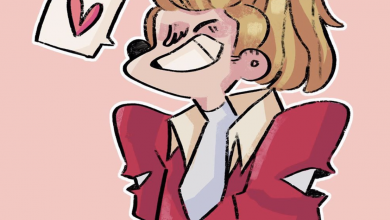Internet Meme Demolition Derby: The “Original” ADHD Medicine

CN: Corporal Punishment/Violence against Children
Hi there gentle Grounded Parents readers. I hope everyone had a very happy summer vacation. It’s the first week of school here in the Queen City, and I was planning on doing a light hearted post about back to school shopping, or getting ready for first grade, or anything that did not make my blood boil. And then this meme came at me through the super secret GP Facebook group. And I had to demolish it. To quote Michael Corleone “Just when I thought I was out, they pull me back in!”
Below is our subject. In case you can’t see the image, picture a rather nice belt, embossed with roses and coiled on a cream colored background. Superimposed is bold text reading The “Original” ADHD medicine.. (yes they didn’t use enough dots in their ellipsis.)

If you are a regular reader of Grounded Parents and the Derby, you already know our position on corporal punishment, we’re against it as a disciplinary tool in general. Even the most well intentioned corporal punishment can have negative consequences for children. But this meme is depicting an attitude that is so much worse than a well meaning parent who spanks a misbehaving child. This is encouraging the abuse of children who suffer from a very real psychological condition. It’s unfortunately common science denial, a belief that the symptoms we call ADHD stem not from a medical condition, but from a deficit of character that can and should be corrected by harsh discipline. Nothing could be further from the truth.
Let’s start out with the facts, ADHD as described by the National Institute of Mental Health (NIMH)…
Attention deficit hyperactivity disorder (ADHD) is one of the most common childhood disorders and can continue through adolescence and adulthood. Symptoms include difficulty staying focused and paying attention, difficulty controlling behavior, and hyperactivity (over-activity).
ADHD has three subtypes:
- Predominantly hyperactive-impulsive
- Most symptoms (six or more) are in the hyperactivity-impulsivity categories.
- Fewer than six symptoms of inattention are present, although inattention may still be present to some degree.
- Predominantly inattentive
- The majority of symptoms (six or more) are in the inattention category and fewer than six symptoms of hyperactivity-impulsivity are present, although hyperactivity-impulsivity may still be present to some degree.
- Children with this subtype are less likely to act out or have difficulties getting along with other children. They may sit quietly, but they are not paying attention to what they are doing. Therefore, the child may be overlooked, and parents and teachers may not notice that he or she has ADHD.
- Combined hyperactive-impulsive and inattentive
- Six or more symptoms of inattention and six or more symptoms of hyperactivity-impulsivity are present.
- Most children have the combined type of ADHD.
The first medical description of ADHD (or ADD), according to the Source of All Knowledge (Wikipedia in case you haven’t read me before), was in the 18th Century by German physician and obvious evil wizard Melchior Adam Weikard…
“An inattentive person won’t remark anything but will be shallow everywhere. He studies his matters only superficially; his judgements are erroneous and he misconceives the worth of things because he does not spend enough time and patience to search a matter individually or by the piece with the adequate accuracy. Such people only hear half of everything; they memorize or inform only half of it or do it in a messy manner. According to a proverb they generally know a little bit of all and nothing of the whole….They are mostly reckless, often copious considering imprudent projects, but they are also most inconstant in execution. They treat everything in a light manner since they are not attentive enough to feel denigration or disadvantages.”
Of course his recommended treatment was beating the shit out of the subject… or was it?
“The inattentive person is to be separated from the noise or any other objects; he is to be kept solitary, in the dark, when he is too active. The easily agile fibres are to be fixated by rubbing, cold baths, steel powder, cinchona, mineral waters, horseback riding, and gymnastic exercises.”
Around the same time, Scottish born physician and author Sir Alexander Crichton, made a more detailed description of what may be the inattentive form of the condition …
- “The incapacity of attending with a necessary degree of constancy to any one object, almost always arises from an unnatural or morbid sensibility of the nerves, by which means this faculty is incessantly withdrawn from one impression to another. It may be either born with a person, or it may be the effect of accidental diseases.
- “When born with a person it becomes evident at a very early period of life, and has a very bad effect, inasmuch as it renders him incapable of attending with constancy to any one object of education. But it seldom is in so great a degree as totally to impede all instruction; and what is very fortunate, it is generally diminished with age.”[4]:271
Crichton further observed:
- “In this disease of attention, if it can with propriety be called so, every impression seems to agitate the person, and gives him or her an unnatural degree of mental restlessness. People walking up and down the room, a slight noise in the same, the moving of a table, the shutting a door suddenly, a slight excess of heat or of cold, too much light, or too little light, all destroy constant attention in such patients, inasmuch as it is easily excited by every impression.”
That’s two doctors (or one doctor and one necromancer) describing ADHD before the American Revolution.
Since then the diagnosis has evolved and a variety of pharmaceutical and therapeutic treatments have been developed by the medical community to help those of us who suffer from ADHD, this graphic shows a timeline of ADHD diagnosis over the last century (link to PDF of which is a little clearer. )
to help those of us who suffer from ADHD, this graphic shows a timeline of ADHD diagnosis over the last century (link to PDF of which is a little clearer. )
I wasn’t handed my diagnosis until 2013, at the age of 45. Suffice to say that further exploration of my history between me and my therapist has lead us to believe that I was a candidate for ADHD treatment long before that, probably when I was in elementary school in the 1970’s, which was unfortunately before a lot of the interventions that we depend on today were even invented. Stratterra (atomoxetine), the drug I use today wasn’t even approved until 2006.
Suffice to say, I was one of those kids that our meme creator or sharer believed should have received the “original ADHD treatment”. Luckily for me my parents didn’t believe in corporal punishment. Unluckily for me, undiagnosed ADHD can have severe repercussions for a young person’s life. This from the American Academy of Child and Adolescent Psychiatry…
Without treatment, a child with ADHD may fall behind in school and have trouble with friendships. Family life may also suffer. Untreated ADHD can increase strain between parents and children. Parents often blame themselves when they can’t communicate with their child. The sense of losing control can be very frustrating. Teenagers with ADHD are at increased risk for driving accidents. Adults with untreated ADHD have higher rates of divorce and job loss, compared with the general population. Luckily, safe and effective treatments are available which can help children and adults help control the symptoms of ADHD and prevent the unwanted consequences.
Growing up with untreated ADHD was a frustrating experience. I look back now and see how it negatively affected my studies in school, my relationship with my peers and parents, and my prospects for a happy future. There were failed subjects, discarded dreams, and college dropouts. I’ve been incredibly lucky to have landed in a place in my life where I was able to finally get the help I needed. Even then, it’s important to remember that there is currently no “cure” for this range of conditions. Medical Science is still not completely sure what causes ADHD. All we can do now is treat the symptoms to the best of our ability.
That uncertainty is definitely a window for woo, religion, and science denial to get between ADHD sufferers and the treatment they need. Google up ADHD Myths vs Facts and you can get a glimpse of some of the misconceptions we face. The same quacks that peddle Alternative Medicine will claim to treat ADHD with vitamins or herbs. Some of the treatment options involve stimulants like Ritalin or Adderall, which can become drugs of abuse when misused by people without ADHD. This has led to the misconception that treating children for the disorder involves giving them dangerous drugs (stimulants actually have a calming effect on people whose ADHD responds to them, I don’t use them myself because they conflict with my generalized anxiety. Isn’t mental illness fun?)
Children suffering from mental illness or disability have a hard enough time living in a society that would rather treat their shortcomings as moral failures rather than treatable medical conditions. Thinking that you can beat the ADHD out of a kid is no better than the pre-scientific notion that insanity was caused by demonic possession and should be treated by exorcism. Please, if you see someone sharing this awful meme, don’t just let it go by, push back. Drop them a link to this piece, or if you’d like something with less profanity and/or bad jokes, send them a link to the NIHM page on ADHD. If we all do our part we can dispel these myths about this form of mental illness and maybe then fewer kids will have to grow up fending for themselves like I did.
Thanks for reading. Remember, if you find a crappy meme out there in the wild that deserves demolition then drop us a link through the contact form or tweet us @GroundedParents or @blotzphoto.
Edit: Part of having ADHD is you have trouble finishing things ;). If you want a glimpse of what ADHD feels like to me, click over to this piece I wrote at Raising Hellions last year.
Featured Image Credit from the 2010 Chelsea County Fair, Flickr user AllieKF
ADHD Chart courtesy of the Center for Disease Control





I know memes are unoriginal at best, but this one’s just recycling South Park!